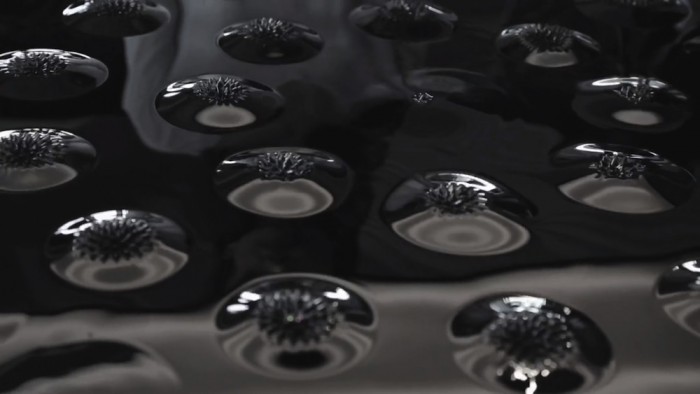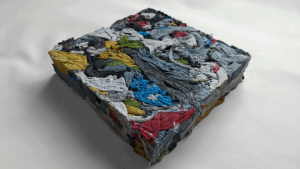
In the midst of the famous space race in the early 1960’s, NASA rocket scientist Steve Papell was busy with the near-impossible task of finding a way for astronauts to pump rocket fuel into an inlet in a weightless environment. He came up with ferrofluid an ink-black, glossy constituent that combines liquid and magnetic particles, which gives it both liquid and solid properties and a distinctly alien look.
When in the presence of a magnetic field, which overpowers the force of gravity, the magnets in ferrofluid follows the field’s path. The fluid could spiral perfectly down just the outermost ridges of a screw or rise out of a container or off a surface, resulting in a mesmerising show of space-age configurations as the ferrofluid seemingly moves and spikes up on its own according to the magnetic pull.
Today the intriguing substance is most often used in a variety of applications that keep it in the shadows – mostly in mechanics and engineering. Medical science also turned to ferrofluid in 2012 to emulate the natural pumping motion of a human heart.
More recently, Tool, a production company with offices in Los Angeles, New York and London partnered with global communications agency Sid Lee to give ferrofluid a more creative application to promote Acer’s newest gaming PC, Predator.
I wanted to make a dark and mysterious interactive world that the audience would step into and, as a team, we had fun making this world a reality, said Tool’s interactive director, who goes by the moniker Aramique.
They designed a system that manipulates a series of 43 magnets placed below the liquid’s container and displayed the Predator above. The installation – at New York City’s Four World Trade Centre invited attendees to ask the Predator a question by speaking into a microphone. This brought the slick black liquid to life ostensibly in answer to the question with a series of futuristic patterns and waves, activated by the unique rhythm of each voice.






